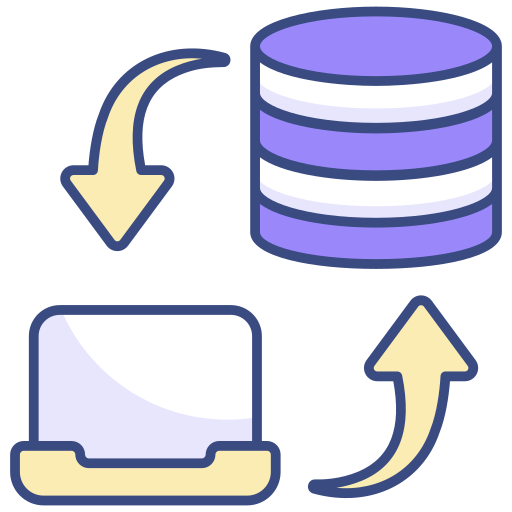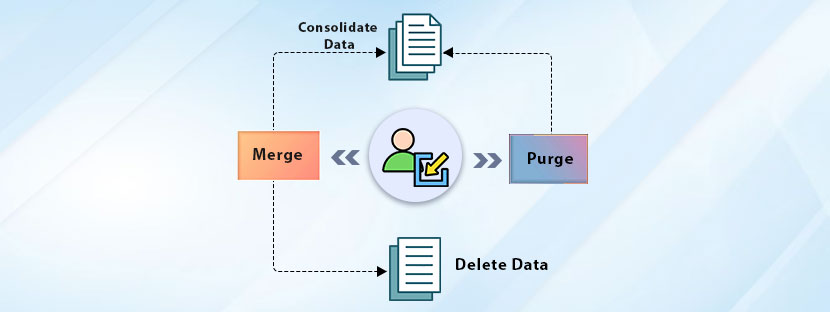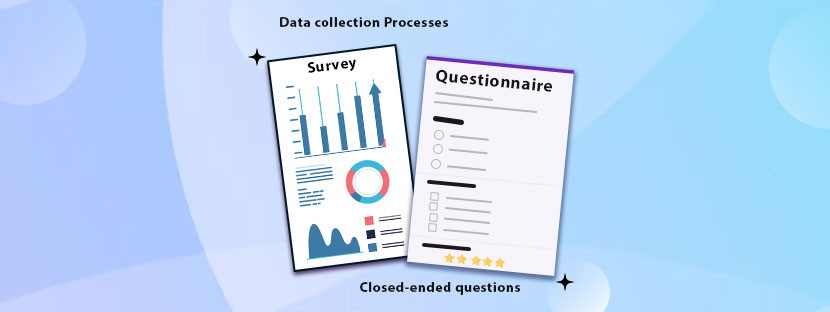In This Article
Did you ever experience a data loss while sending data from one pen drive to another?
Well, if not, you’re a technological genius. But if yes, you definitely have a fear of data migration.
Once (when in college), I lost all my favourite songs while transferring them to a faulty drive. I still haven’t recovered from that trauma, honestly!
Jokes aside, facing challenges while migrating data from your legacy database to another is a serious issue. It needs further elaboration and explanation. Many organizations have lost huge amounts of data in the past when they started migrating. It can happen with your organization, too, if you’ve not taken the right steps and performed the migration in the right manner.
Welcome you to this blog, you’re in the right place to find all data migration challenges and their solutions here.
Know your migration type
Here are the most common types of migration you can interact with when you explore the data fields.
Database migration
Data transmission is the actual process through which data migration happens. It means moving your data from one database to another. To provide you with an example, you decided to move your data from PostgreSQL to MySQL or vice versa. It has a simple meaning: you’re moving your existing data from one database to another without changing the structure. Isn’t it?
Preserving the data quality becomes the prime element when a database migration takes place. For that, you need to check whether your new database exactly fits your requirements or not. Size, for that matter. The new database should safely place your existing data without creating any disturbance.
✎Test your database before confirming full data transmission. Otherwise, the chance of data loss would increase.
Database upgrade
Upgrading to a new version of the database becomes important when there is no official support for the current version available.
The legacy system that you might have currently will not be replaced at all. A database upgrade means welcoming a transition where the existing database will accept a newer version of the same platform.
Suppose you’re using Amazon Web Services to store your data in the cloud platform. And, you’re using the current version (AL2023), which is efficient. But Amazon is going to launch AL2 next. Therefore, you have to shift your current version to the updated one when it launches. Simple. The question is: do you need to migrate your data or go through a transition phase?
To upgrade your database, you can contact the service provider from whom you have purchased the database. If it’s Amazon Web Services, then contact them.
Infrastructure migration
The name itself indicates that the migration is going to happen on the infrastructure. It will affect the data systems and applications. Changing the infrastructure from one system to another has one prime example. For example, switching data from the legacy system to the cloud is an infrastructural shift, and that’s why it would come into this category.
Switching to the cloud is the most cost-effective and practical decision you could ever make. Maintenance costs are lower, and that’s why it is becoming popular over the years. All you need to do is follow the cloud migration guide effectively to perform the migration tasks well.
Cloud storage is beneficial in many other ways, too. It prevents data damage and provides real-time access. Legacy storage that stores data offline cannot provide real-time sync and overseas access. In that case, you need to incorporate infrastructure migration to replace the existing infrastructure.
Storage migration
When you replace the storage location then it would come under the purview of storage migration. Here, you replace the existing storage with another storage facility. Many things come into the picture when you consider changing the database storage facility.
Here are the probable reasons why organizations initiate storage migration;
Basically, switching to better software is the available option that organizations generally have in this case. Sometimes it’s better to switch to another better-promising platform becomes important for the sake of data protection.
App migration
Switching the platform from one to another is a part of the app migration procedure. Every application requires different types of data to operate. Thus, to initiate the app migration procedure, you need to change the model of your data first. Under this data transition type, you have to ensure that all data formats are communicable between the two solutions. The risk of data failure may increase if you keep the migration process left undone.
Data migration challenges that scare people the most
Migrating data from a legacy system to the desired location can sometimes be challenging. Many organization falls into technical debt due to this. More than 71% companies face sharp impacts when they change their technology. They get trapped in technical debt most time.
Data migration means you’re switching your existing database to another source. This requires a technical shift, and that could harm your existing knowledge base if you’re not ready for the shift.
Let’s discuss what challenges you’re going to face when you start data migration. Among them, we are highlighting the most prominent ones in the following section that scare organizations all the time.
◈ Data Loss
Anything can happen to your data…while the migration takes up the space
Think of a new database where you are going to put your data. Whether the database has the right capacity, security level, and maintains other matters or not, you’ll track that. But still there are many factors that you cannot guess initially. If anything goes wrong, the entire thing will fall off.
Unfortunately, you’ll end up losing data from your side.

To safely take your data from one system to another, you need to have a backup. Even though a mistake happens, you’ll still have your data safe and secure at your disposal and control. However, we must not aim to lose our data while migrating to another system.
Besides creating your backup database, here are some other things you need to check before migrating your database;
⃝✔ Hardware compatibility
⃝✔ Software compatibility
⃝✔ Network interference
⃝✔ Firewall setup
⃝✔ Format of your data
⃝✔ Access control
Carefully validate each of these things in order to provide a safety valve to your actual data. Having a backup file and therefore testing the migration is the best thing you can do there. Almost every organization does that. If there is any issue creating a backup, you can take professional help creating a backup database, as it is the right option for you.
Once you have successfully created the backup database, you need to run a test on the other things that we have covered above. Combining both aspects can make sure your data gets migrated to the desired location accurately without leaving any stress.
◈ Increasing Data Corruption Level
Usually, legacy systems store unused and unnecessary data apart from necessary and useful data.
Don’t get confused now.
The legacy system or the existing system that you’re currently using may have enormous volumes of data. Because you’re working on that for many years. But when you think of migrating to a new database, not every set of data will going to enter into the new database at all. You need to have a few selected choices to move further.
Well, we are leaving an important aspect there. And that is “the chance of getting the data corrupted”.
Over time, as usage data increases, the chances of mismatch, redundancy, duplication, and incompleteness of data records also peak. You cannot transfer this data to your new database through migration or any other means. Right?
◈ Data Orchestration
Data is not a single object that you can store in any one location. Rather, you need to store all your data in diverse formats across your databases. Data gets stored in different formats, depending on the size and parameters. A database can have multiple users, probably from different departments and teams.
Therefore, when data becomes untraceable, it produces a mess. Imagine your sales team just got the master database where everything from A to Z is mentioned. And they are now being told to follow up with everyone on the list in the best possible way within 5 days. It’s a blunder from them. They cannot do that. Mostly all the 5 days they have will pass without making any constructive decision. This is called a decision trap, and it happens when teams get all the data in one place.
Data orchestration is the absolute need at that time to get way with the siloness of your teams. It’s an automated process in which you manage and coordinate data workflow across multiple systems to move your data consistently.
Audit your data process and keep tracking all your data points to reduce data slio culture within your database. Therefore, you can streamline the entire project seamlessly without any hassle in the later phases.
◈ Synchronization
The exact value of your data that you put into your system must be reflected in the system that you just migrated. All your data should sync in the right order to realize all the benefits. If two databases sync well, you can experience the best benefits of data migration. If not, there is a high chance that all your data will lose all track.
That would be great, a sad situation. No organization ever wants to be in that situation ever.
Information loss is the primary factor, and reputational damage is the second that appears as an outcome of that situation. When both things happen together, organizations lose revenue opportunities and overrun budgets.
Application modernization is the need of the hour in this situation. If you’re using an old version of a database, you need to upgrade its version to experience all the new features. Choose a version of a database that syncs your data on time. That’s the best way you bring data synchronization without harming your existing system.
◈ System downtime
It’s very natural for a business to run constantly over the years. With time, requirements change, and businesses update their process. That’s the thing. However, while migrating data to the new system, businesses many a time receive a threat of downtime. It usually happens due to technical issues on the migration side.
The chaos downtime that it creates is huge. It directly affects the regular business operations and impacts business continuity. Due to this chaos, it will affect stakeholders’ interest in the business. They might lose opportunities because of the mess.
So, what’s the need of the hour?
⟢ Minimize downtime
⟢ Safe and secure backup
⟢ Aim to achieve 0% data loss
⟢ Careful planning
Your system should not face any downtime during and after migrating your data. Careful planning and excellent execution are the main matters in this case. You need to perform a hassle-free data migration without any external influences. A perfect blend of skills and technology is required to get all data migrated without any downtime.
One thing you must also be careful and is following all the security protocols. Having strong security installed in the data migration process helps you recover your lost data. Even if you lose track of your data, the system will track everything and prevent data loss with effective measures.
◈ Heterogeneous data environment
Every database is unique so as data. Even the applications that holds data are unique. Databases are different, and they create different elements within the data environment. Further, each data environment accommodates numerous data sources. Various elements like third-party applications, legacy systems, cloud platforms, etc are integrated within the data environment.
As you can feel a heterogeneity within the data environment, it becomes difficult to migrate data from one database to another. Because of the heterogeneity of data, migration becomes too complex and hard.
A need for sharp data migration tools becomes essential at this stage. All the intricacies of data migration should be followed in order. Your data migration tools or application must be able to seamlessly move your database from one platform to another without any friction. Also, these applications must ensure that the target system gets integrated with other tools you use. Marketing tools, CRM applications, ERP tools, and other important tools for that matter.
◈ A threat to data security is the
Trusting a new database or a new location to store your data is challenging. Many companies face trust issues there. Hope you would also feel like that.
Every database stores confidential data. Every organization stores data that is confidential data in its secure databases. However, when it comes to sending data from one location to another, providing the utmost security is necessary.
Choose a database or platform that provides the best security of all time. Therefore, migration can be done without any threat of data theft. Many cases have come before when organizations faced data loss and theft incidents. They lost track of their data when they tried to migrate their data from one location to another. It happens mostly all times. Thus, it’s a serious threat.
The following measures can help organizations safeguarding their data from serious data security threats;
- Data encryptions from start to bottom
- Secure file transfer protocols
- Access control
Once all these measures becomes a part of the process, you confidently seed data security into the process. Following all these measures will ensure building up your data security strategy, which is essential for secure data migration. The goal here is to minimize the security risks while strengthening the migration part. It should be done seamlessly and conveniently.
◈ Resource constraints
Not having enough resources is one of the major problematic areas in data migration. Sometimes a lack of availability of right skillsets or the right kind of tool etc can impact the process. Migrating data from one platform to another is a resourceful work and it should be done in a proper way to bypass all constraints.
Unfortunately, without having enough backup and a full resource set up, the process will leave some loopholes. Thus, it’s always best to have all your resources prepared and accumulated while you perform the data migration tasks. To make the flow of seamless data migrated from one location to your desired location, make sure all your resources are validated and useful.
Application Modernization Strategy to Reduce the Impacts of Data Migration
Strengthening the Foundation with System Assessment
Before any migration initiative begins, the smartest move is understanding exactly what you already have. A complete assessment of existing applications, databases, workflows, and dependencies lays the groundwork for a controlled modernization journey. This stage helps identify outdated modules, redundant processes, and unstable integrations that can turn a simple migration into a risk-filled operation.
When teams know the terrain, they can design a strategy that avoids disruption, protects business continuity, and minimizes user-side impact. A well-defined assessment also ensures you migrate only what holds value and retire what doesn’t.
➧ 73% of modernization failures stem from unknown system dependencies
➧ Companies reduce migration delays by up to 40% through pre-assessment mapping
➧ 61% of enterprises find data quality problems only after migration begins
Prioritizing Business-Critical Applications First
Modernization is most effective when driven by business priorities rather than technical instinct. Instead of trying to move everything at once, organizations benefit from prioritizing mission-critical applications first; those that directly affect customer experience, revenue operations, or daily productivity.
Modernizing these systems upfront ensures minimal performance fluctuations during migration and builds confidence across teams. This focus-based approach also distributes risk more evenly, giving architects time to stabilize high-impact components before moving to secondary ones.
Leveraging Hybrid and Incremental Migration Models
A sudden, full-scale cutover often introduces massive risk. Data loss, corrupted transactions, broken APIs, and inconsistent user sessions. Hybrid and incremental migration models solve this issue by allowing the old system to run in parallel with the new one. This gives developers time to test, validate, compare outputs, and correct issues without disturbing ongoing operations.
It also reduces stress on teams by spreading changes over manageable waves. Incremental migration offers the flexibility to roll back instantly if anomalies appear.
Embedding Automation and AI for Safer Data Transfer
Automation tools and AI-driven engines act as a shield during migration by maintaining accuracy, consistency, and speed. Automated workflows handle validation, mapping, cleansing, and transformation tasks prone to human error when done manually.
AI enhances this by detecting duplicates, repairing schema conflicts, forecasting downtime risks, and optimizing data flow routes. With reliable automation, the burden on IT teams drops dramatically, and the likelihood of errors reduces even further, making modernization smoother and safer.
Strengthening Data Governance and Security Layers
A strong governance framework is essential if the goal is to reduce migration impact. As data moves from legacy environments to modern platforms, the security risks multiply unauthorized access, misconfigured roles, compliance violations, or temporary exposure points. By enforcing policies for encryption, masking, access control, and auditability, organizations ensure data remains protected throughout the journey. Governance also sets quality rules that stabilize datasets before migration, preventing performance issues afterward.
Establishing Rigorous Testing and Post-Migration Monitoring
Modernization doesn’t end once the data reaches the new environment. Rigorous testing, functional, performance, regression, integrity, and user acceptance, is vital for ensuring systems behave exactly as intended.
Post-migration monitoring then acts as the final safety net, watching for anomalies, latency spikes, access failures, and workflow mismatches. This continuous oversight ensures smooth stabilization and helps teams address issues early before they escalate into service disruptions or customer complaints.













